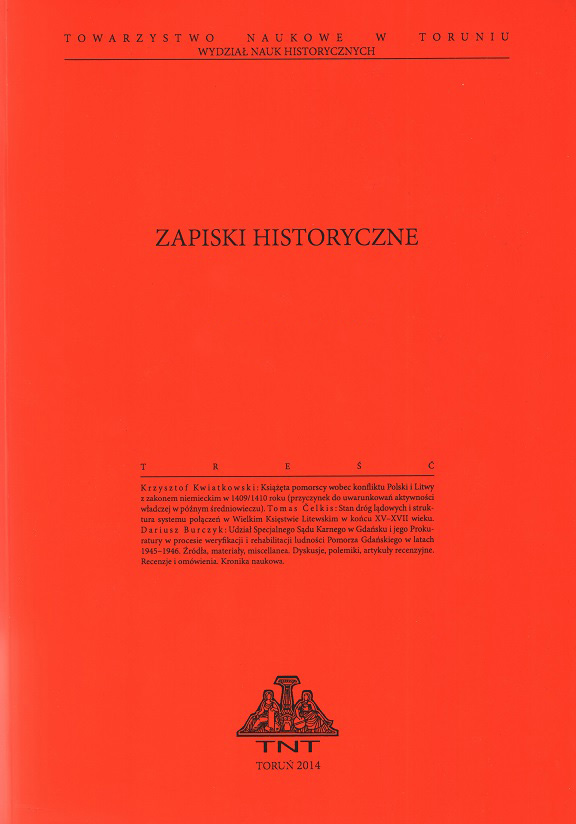Środowisko kapłańskie na Pomorzu Zachodnim w latach 1945–1956
Sacerdotal Community in Western Pomerania in the Years 1945–1956
Author(s): Marta CichockaSubject(s): History of Church(es), Social history, WW II and following years (1940 - 1949), Post-War period (1950 - 1989), History of Religion
Published by: Towarzystwo Naukowe w Toruniu
Keywords: Regained Territories; settlement; priests; clergy; Polonization; adaptation; church administration;the Catholic Church;
Summary/Abstract: After the Second World War, the region of Western Pomerania changed its religious face from Protestant to Catholic as a result of political decisions. As the Polish territory was moved to the west, the influence of the Roman Catholic Church also shifted. Not only secular settlers but also priests had to adjust to those exceptional circumstances. Usually treated as part of the institution they created, they have not yet been fully described as one of the groups of migrants. However, their role was crucial for the settlement and land development by believers, the Church and the Polish state. The aim of the article is to answer the questions who those clergymen were and how they dealt with this unusual challenge. In the literature on the subject, such issues as settlement processes in the Western and Northern Territories, the creation of the church administration, and relations between the state and the church have been widely described. Relations between priests and believers or relations among clergymen themselves are still less known. The documents available in the archives of state and church provenance allow to examine the priestly environment, which also underwent the stage of adaptation and integration with the foreign material and social environment. The historical and comparative method of research led to the establishment of several conclusions, including the most important one that the priests who came to Western Pomerania in the first decade after the war were not homogeneous. Their diversity concerned origin, education, customs or age, but also their attitude towards the so-called Regained Territories, their duties, church discipline or the new authority in Poland. This disintegration, often accompanied by prejudices and stereotypes, constituted the specificity of the religious life of the region and from this point of view is worth examining.
Journal: Zapiski Historyczne
- Issue Year: 84/2019
- Issue No: 2
- Page Range: 123-149
- Page Count: 27
- Language: Polish

